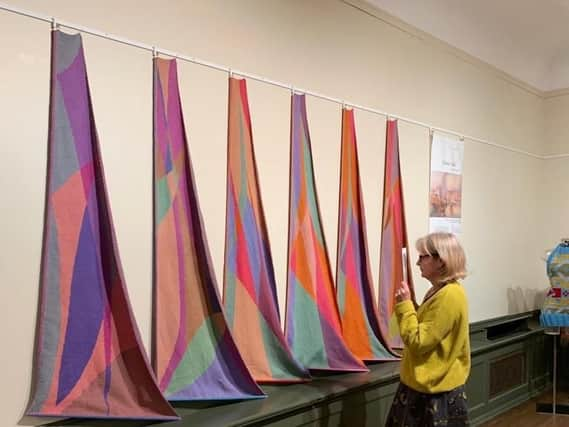Exhibition explores art and science - and environmental benefits - of knitting


The exhibition explores the art and science of knitting.
Dr Gaston is a textile designer, maker and researcher. An international textile design career has led to her current role as the programme manager of BA Textile Design at the University of Leeds, where she specialises in research and teaching of knitted and stitched textiles.
Dr Scott is a UK-based designer and academic whose work Programmable Knitting has been exhibited internationally. Her research focuses on environmentally responsive material systems, and biomimicry, using her practice to interrogate the transformational role of textiles as site specific architectures.
Advertisement
Hide AdAdvertisement
Hide AdUsing Knit as a research tool Liz and Jane, senior teaching fellows in the School of Design at the University of Leeds, produce site specific, bespoke designs and architectural installations. Their specialism is the integration of digital knitting with craft processes and their collaborative work includes knitted interior architecture, site specific installations, and community driven design events.
“We are excited to bring together a new collection of responsive installations exploring the potential of knitting as a smart material system. We think it has relevance to challenge issues of sustainability across architecture, interiors and fashion.”
Post Digital Knit brings together three complimentary strategies, Sustainable, Smart and Shaped.
Responsive smart textiles investigate the reactive behaviours programmed into knitted fabric through an understanding of knit structure and materials.
Advertisement
Hide AdAdvertisement
Hide AdFor example, colour and pattern change is coded into knitted fabrics using light theory.
Shape change is programmed into knitted fabric using insight derived from plant biology, combined with an understanding of natural yarns and knitted fabric structure. These approaches produce fabrics that are smart, using techniques that are sustainable.
Knit contributes to the sustainable agenda as shape and form are created directly from the materials which means there is minimal waste in knit production. Knitted fabrics can be produced from any material with the necessary strength, length and flexibility.
Some of the most low-impact, natural fibres such as linen, wool and jute have been explored within this exhibition, highlighting the potential for materials that are produced locally and can biodegrade at end of life.
The exhibition runs until Wednesday June 12.